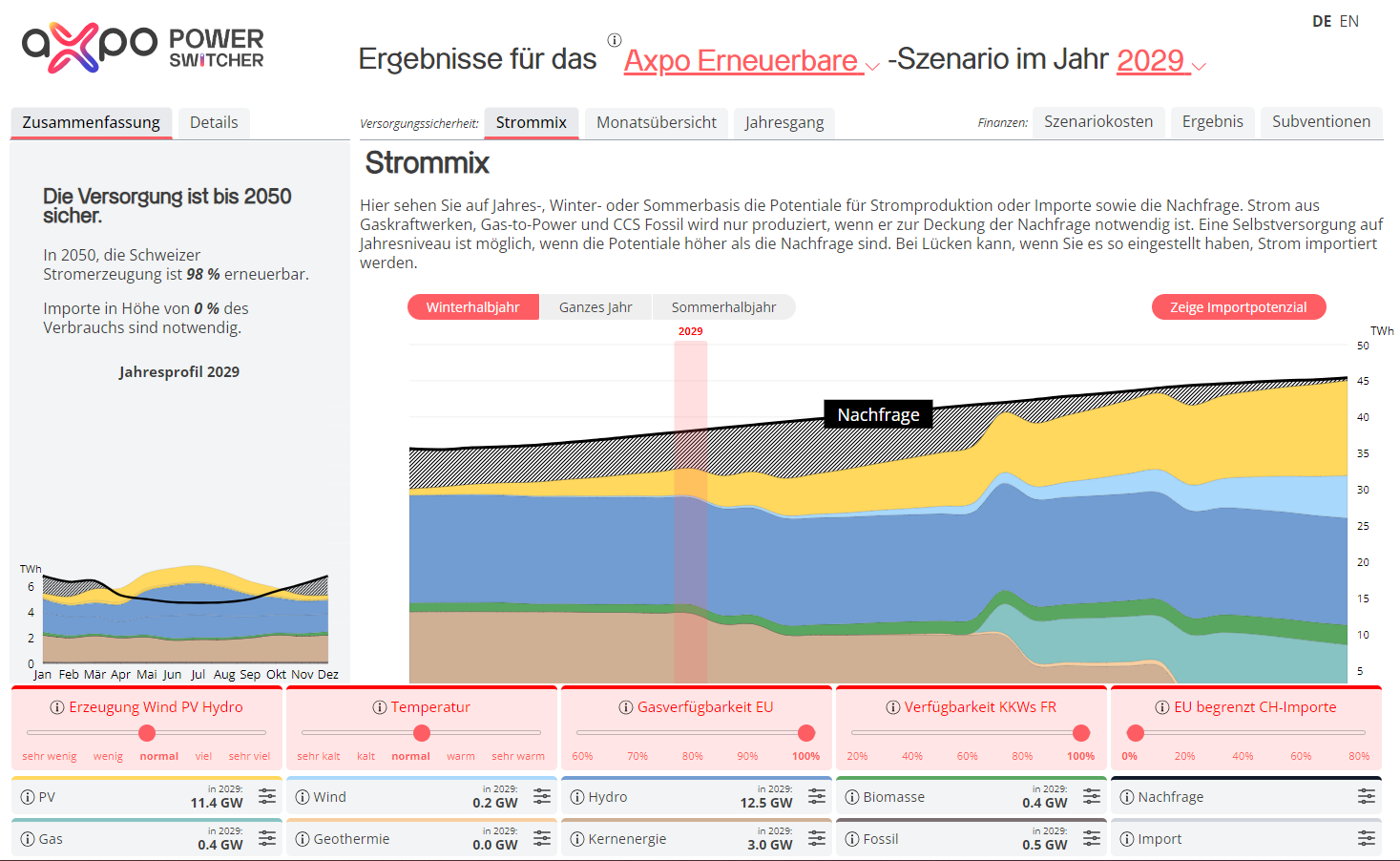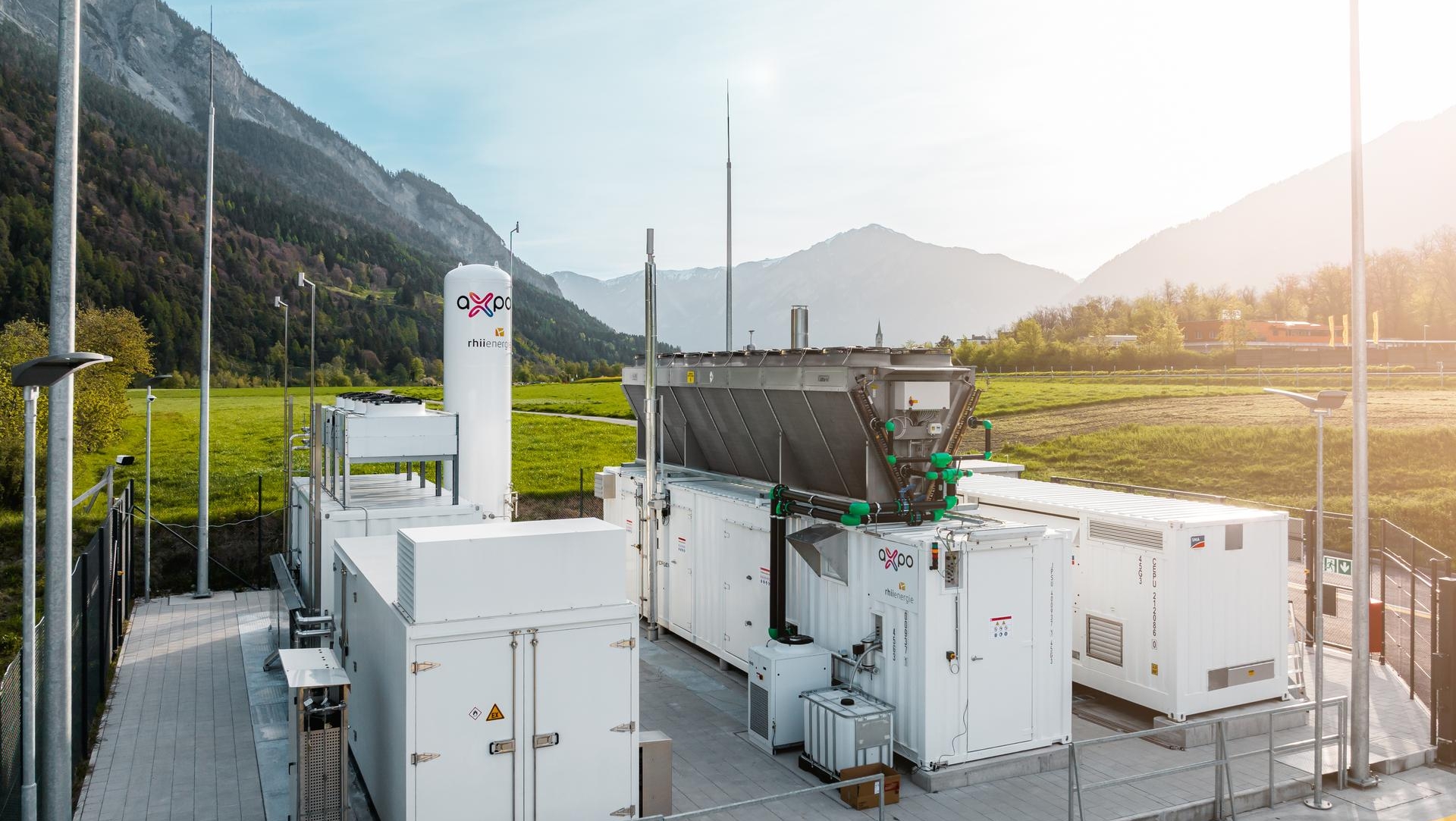
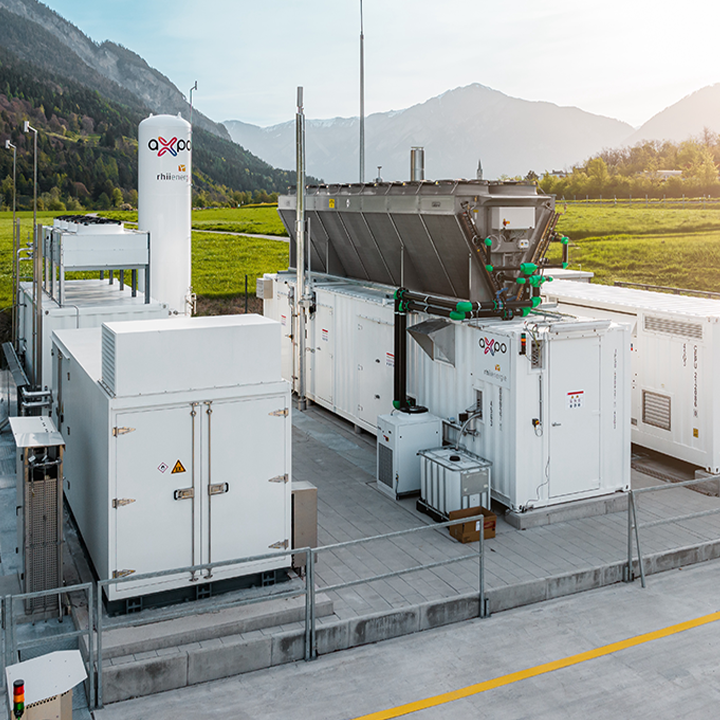
Hydrogen A pillar of the energy transition
Green hydrogen is an important pillar of the energy transition. It allows, among other things, to decarbonise sectors such as transport (e.g. freight transport and air traffic) and certain industries (e.g. steel and fertilizer production).
Interested in purchasing green hydrogen?
Axpo is taking the next step towards a sustainable energy supply. Our plants are already producing sustainable, green hydrogen for our customers who want to become CO₂ neutral. Our customers can be found in the manufacturing industry as well as in the mobility and logistics sectors.
| Country | Plants | Capacity | Production | Customers |
|---|---|---|---|---|
| CH | Domat / Ems | 2.5 MW | up to 350 t H₂ / p.a. | Industry Mobility |
| CH | Bürglen (H2Uri) | 2 MW | up to 260 t H₂ p.a. | Industry Mobility |
Ongoing projects
By founding the project company "Arve Hydrogène Mobilité", Axpo is investing in a project for the production and distribution of hydrogen in France. Specifically for the mobility sector in the French Arve Valley. The first hydrogen vehicles should be able to refuel at an H₂ filling station as early as the first quarter of 2025. The project is being supported by various local partners, including hydrogen refuelling station developer Atawey and Jean Lain Mobilités, a leading car dealer and specialist in mobility solutions in the Alpine region. An electrolyser capacity of up to 5 MW will be gradually installed by 2030 to meet the growing demand for carbon-free mobility in the region.
Axpo is the majority shareholder in H2Uri, which is building a hydrogen production plant in Bürglen in central Switzerland. The regionally produced hydrogen will be used to power a passenger ship operated by the Lake Lucerne Shipping Company (SGV) AG on nearby Lake Lucerne. In addition to Axpo and SGV, EWA-energieUri and AVIA Schätzle are also involved in the project. The groundbreaking ceremony for the plant took place in December 2024. The hydrogen production plant is expected to go into operation at the beginning of 2026. The conversion of the SGV ship ‘MS Saphir’ to a hydrogen fuel cell system should be completed by autumn 2026.
Axpo holds a 45% stake in Swiss Green Gas International, or SGGI for short. The joint venture, founded in 2020, develops and executes Power-to-X plantsin Northern Europe (more about Power-To-X on Wikipedia). The plants produce hydrogen and synthetic methane (green gas) from renewable electricity. This is intended to accelerate the urgent phase-out of fossil fuels. Other shareholders of SGGI are Holdigaz, which mainly supplies gas to the cantons of Vaud, Valais and Fribourg, and Nordur Group, a development and investment company.
Together with Enego – a family-owned company active in the energy transition – Axpo is assessing the viability of a large-scale green hydrogen project in Sicily, located in the Priolo-Augusta industrial area on the island’s east coast. With an initial electrolyser capacity of 100 MW, Project Hynego would supply green hydrogen to ISAB, one of Europe’s largest refineries, supporting the decarbonisation of its production site. The project could be scaled up to 300 MW in the future, helping to establish a ‘hydrogen valley’ across the industrial region between Catania and Siracusa.
Role of Axpo
-
Building the hydrogen economy
Axpo wants to actively promote the development of the hydrogen economy in Switzerland. This requires expertise in the project planning of H₂ production plants, their operation, application optimisation and the marketing of hydrogen. Axpo acts as a producer of green hydrogen and also uses its know-how as a competent project partner.
-
Support in project planning and the construction of your own hydrogen production facility
We support you in your hydrogen production projects. Be it as a stand-alone, or in combination with a dedicated production park for solar power or wind energy. We are experienced in the dimensioning, planning and construction of parks and electrolysers and advise you on other services related to hydrogen production.
-
Sourcing of electricity and guarantees of origin for electrolysis
We bring the required electricity and certificates to you. You have the possibility to choose a dedicated power plant as the source, or you can obtain a structured power purchase agreement (PPA).
-
Optimising the dispatch of your electrolyser
The production costs of hydrogen are about 75% dependent on electricity costs, so optimised use is important. Axpo optimises the dispatch of your electrolyser on the market and thus ensures that production costs remain low or that additional income can be generated with the unused electricity
-
Support for the purchase and marketing of hydrogen
We operate internationally in around 40 markets and can purchase and market the hydrogen you produce.
Hydrogen from A to Z
Hydrogen (H) is the most abundant element found in the universe – it is a component of water (H₂O) and virtually all organic compounds.
Furthermore, hydrogen is the chemical element with the lowest atomic mass. However, the atomic hydrogen H does not occur in our everyday lives, but molecular hydrogen does: H₂, an invisible, colourless, tasteless and non-toxic gas (more on the chemical element on Wikipedia). It is 14x lighter than air and has a very low volumetric energy density (energy per m³). Hydrogen contains a lot of energy per mass (calorific value), about 3x more than gasoline or 7x more than wood pellets.
Hydrogen can be produced in various ways. The most widely used method today is the steam reforming of natural gas. In this process, natural gas (CH₄) is heated, split and reacts with the water vapour; so-called grey hydrogen is produced and CO₂ is emitted. If the CO₂ produced is captured and stored permanently, the hydrogen is called blue and it is correspondingly low in CO₂. Today, this is very rare.
Green hydrogen: CO₂-free and climate-neutral
Another method uses water and not natural gas as the starting material. The water is split into water and oxygen by means of electrolysis. If the electricity used for this purpose is renewable, the hydrogen produced in this way is called green. The following film explains how green hydrogen is produced, its significance and the related activities of Axpo.

Since both the transport and storage of hydrogen are cumbersome, it can be further processed into products that are easier to handle. One possibility is to remove nitrogen from the ambient air and use it to process the hydrogen into ammonia. Another option is to remove CO₂ from the environment and use it to convert the hydrogen into either methane or methanol. These derivatives can be used as energy carriers or as chemical starting materials.
However, there is also the possibility of converting the hydrogen back into electricity, which is explained in the next section. However, it should be emphasized that each conversion step is associated with efficiency losses.
Conversion into electricity
The reconversion of hydrogen into electricity can be done either thermomechanically or in a fuel cell. This fuel cell is an electrochemical apparatus for the direct conversion of the chemical energy of a fuel into electricity.
Similar to batteries, fuel cells produce direct current at low voltage. A battery consumes a chemical substance contained in the cell block itself. In fuel cells, on the other hand, the fuel is continuously supplied to the cell block, similar to gasoline or diesel fuel in an internal combustion engine.
Frequently asked questions about hydrogen
Green hydrogen is produced by the electrolysis of water. Electricity from renewable energy sources such as hydropower, wind and solar energy is used for this purpose. Green hydrogen is CO₂-free and of great importance because it is climate-neutral and can contribute to decarbonisation.

Roughly speaking, hydrogen is interesting for two reasons, on the one hand as a chemical raw material and secondly as an energy carrier. Today, hydrogen is used almost exclusively as a chemical raw material (e.g. for the production of Fertilisers or in refineries).
With regard to decarbonisation, two aspects must therefore be addressed:
- In existing applications, grey hydrogen must be replaced with climate-neutral hydrogen.
- Its potential as an energy source must be exploited.
Hydrogen is to be used where electrification as a substitute for fossil fuels is not economically or process-wise possible.
The most important key figure for assessing the economic viability of green hydrogen production is the total production cost, known as the Levelised Cost of Hydrogen (LCOH). Relevant here are the investment costs (CAPEX), operating costs (OPEX), electricity costs and financing costs. You can find more details in our white paper on hydrogen.
- White paper in PDF format View Send email Download
Like electricity, hydrogen is not green by definition. Depending on the method of production, the hydrogen is named after a different colour. You can find an overview here:
Downloads
In the following Axpo publications, you can find further information on the topic of hydrogen.
- White Paper: Role and Potential of Hydrogen in Switzerland View Send email Download
- Hydrogen & Syngas: Upcoming Low Carbon Energy Carriers View Send email Download
MatcH2 network
MatcH2 is the digital network for green hydrogen and derivatives. Register your company today and benefit from the advantages of a highly collaborative community. Register your company today and develop new partnerships.
Contact us
Whatever energy service you need, we can provide you with competent and sound support. We would be happy to explain what we can do for you in a personal meeting.
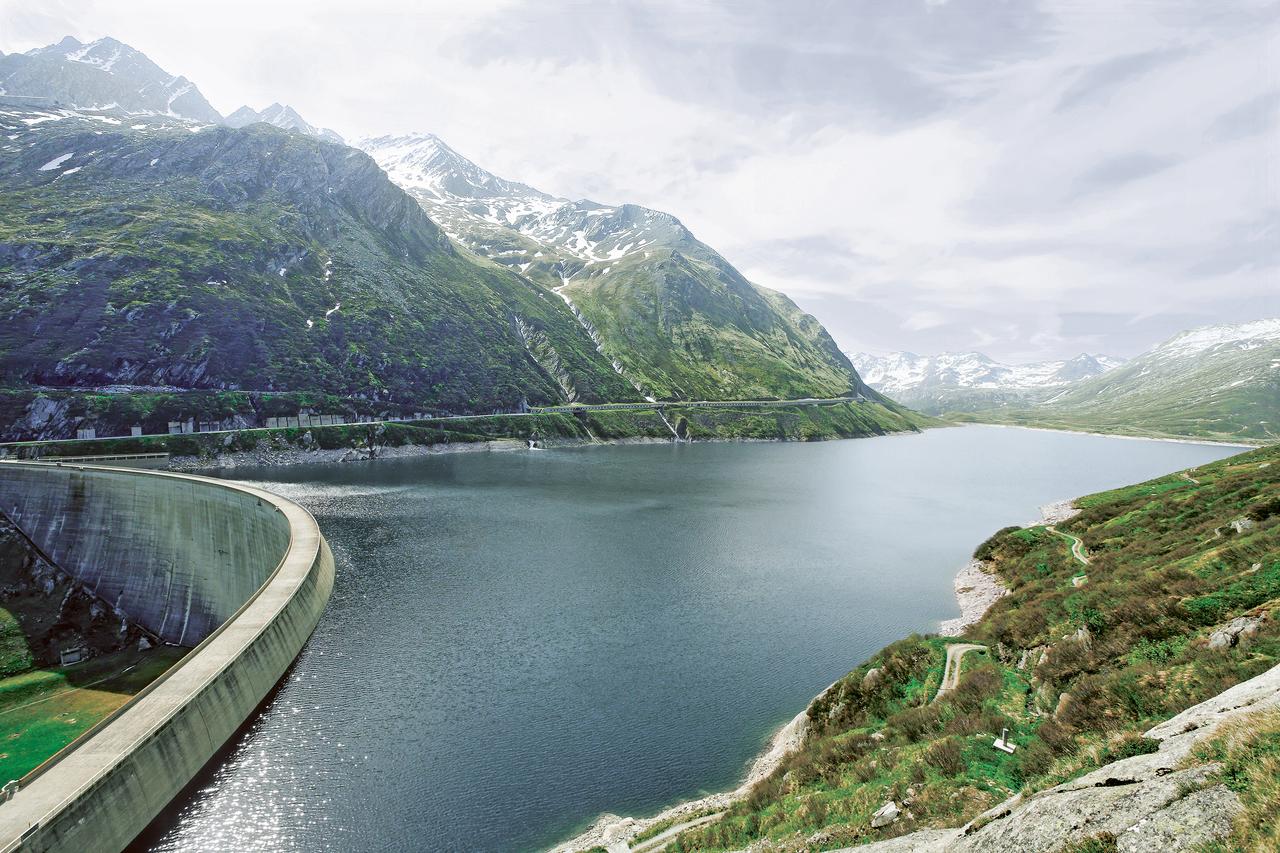
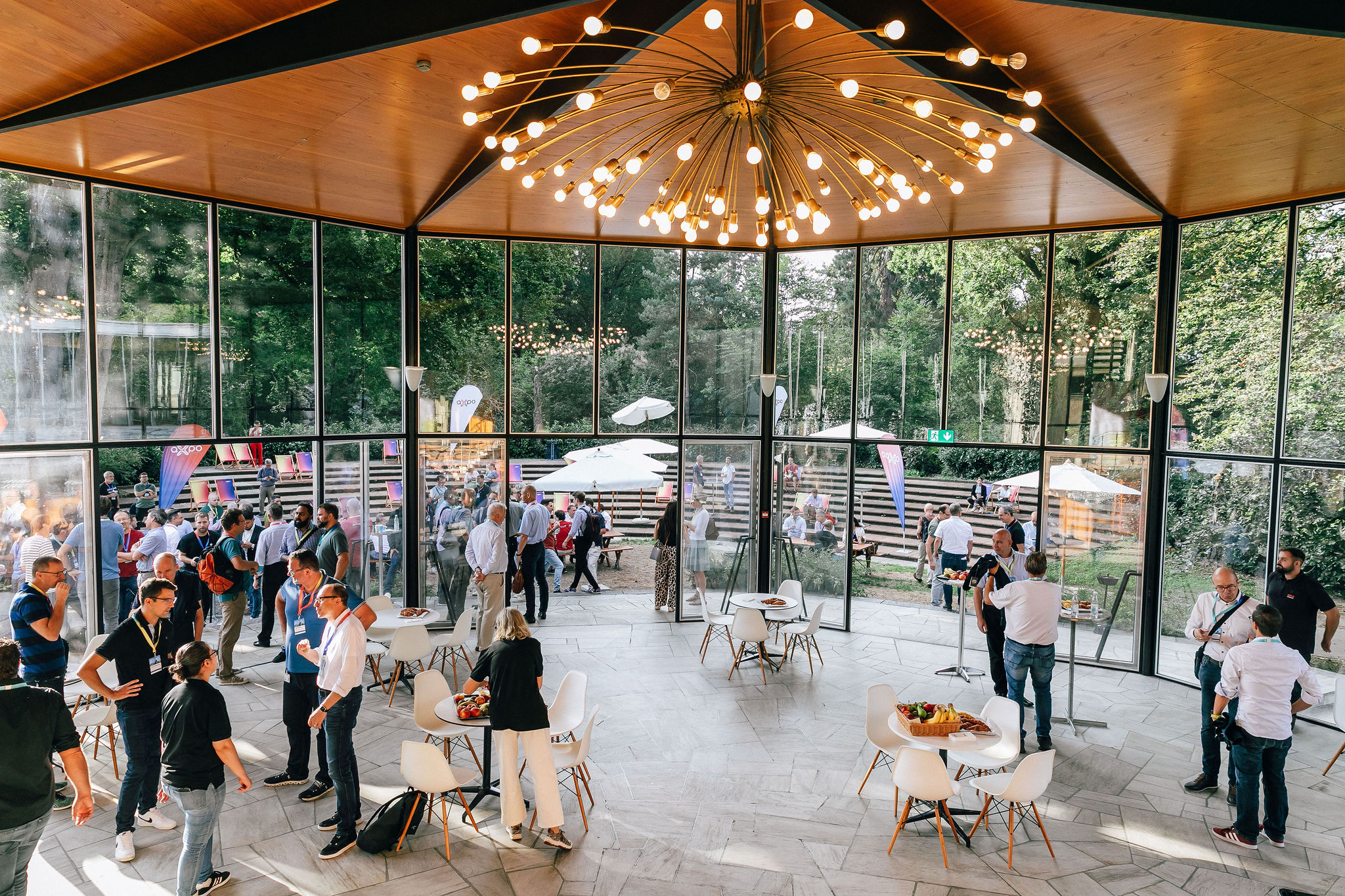
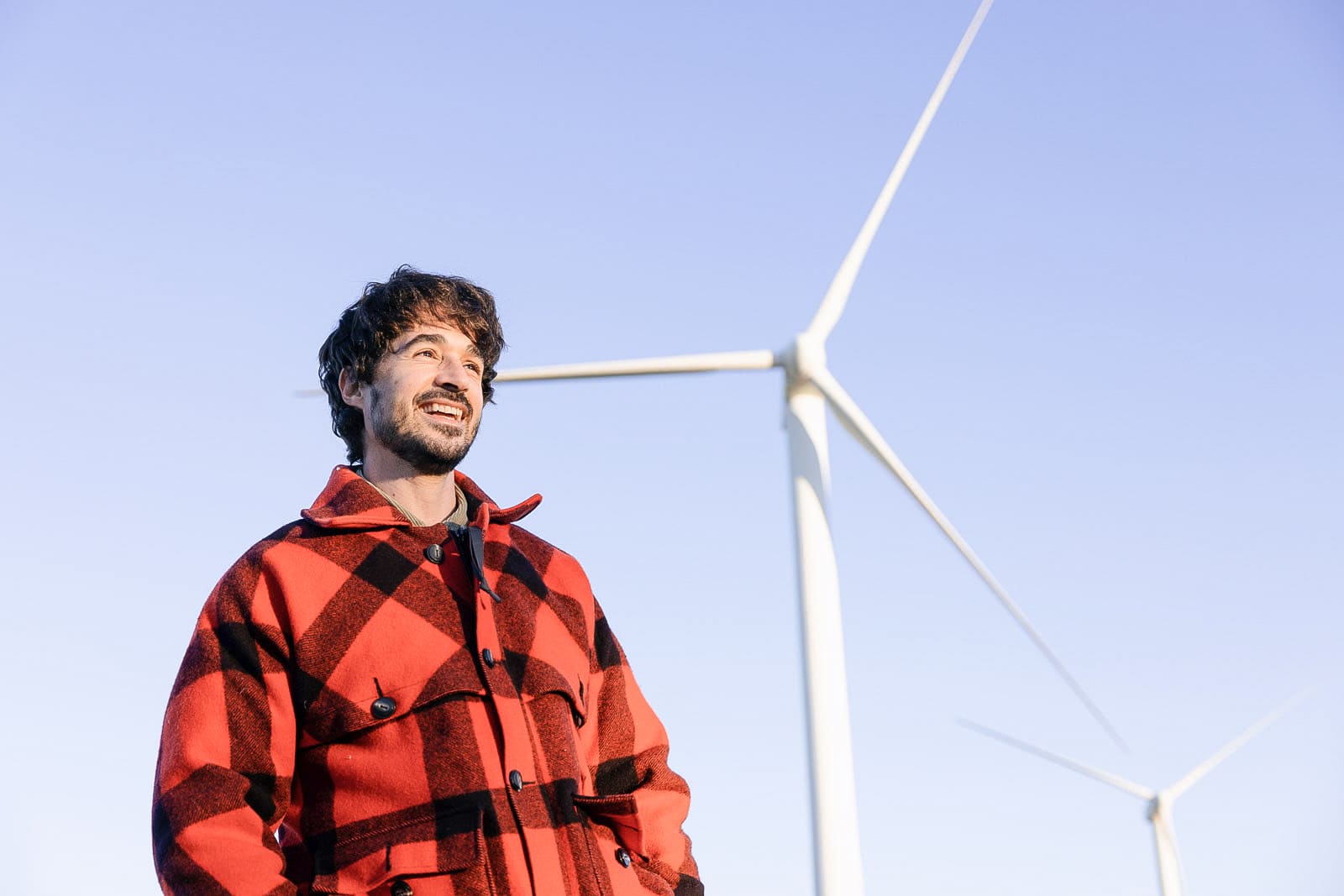

.jpg)

